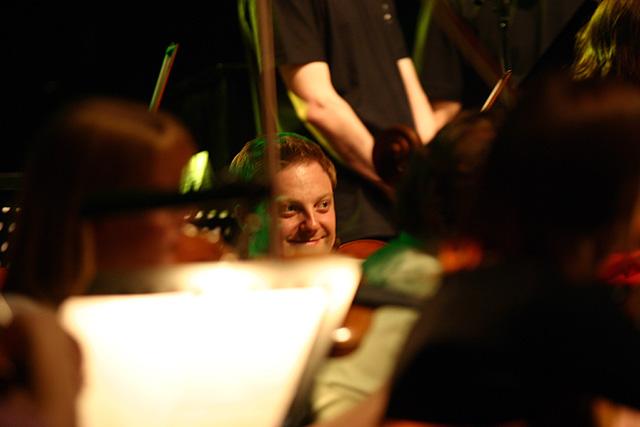
Karita Mattila's new home workout DVD – now available from stores across the country! Weight loss on Mattila's four-point plan guaranteed – or your money back!
Joking aside, though I haven't listened to it, I'm sure this is an excellent disc. Kaija Saariaho's Quatre instants were written for Mattila and she has championed them ever since (unlike many performers who commission works, perform them once or twice, then conveniently forget about them). Given her acclaimed performances in the operas of Leoš Janáček, I imagine her voice is well suited to the music of Dvořák and Rachmaninov. Silly cover art for what is probably an excellent release.
Coming up with suitable cover art presents a wealth of challenges. The choir I sing with is about to release a CD of contemporary choral music, but what to put on the cover is an sensitive issue and can have a very real effect on what people buy and what they don't. Like, I imagine, the majority of people, I'm a sucker for judging a book / bottle of wine / CD by its cover. How can we make this disc different from all the thousands of other discs of contemporary choral music? The cover art serves as a calling card for the product as a whole. What to name one's disc is another minefield. A friend is currently recording a disc of kannel music (what's a kannel, I hear you ask!) That, of course, is part of the problem. This is an instrument with few exponents, so the title of the disc must both enhance the mystique of the instrument, while making it seem accessible to a wider audience. Tricky.
Oh! My recording of Britten's Billy Budd has just arrived from Amazon! Odd cover art: a man (presumably Billy) tied to the helm of a ship, the whole image airbrushed into something that could be from a collection by Pierre & Gilles. Hmmm... a bit homoerotic. Great cast, though. I'll have to sign off now and listen to it immediately. Review to follow – watch this space!


2 comments:
aah... kantele, you mean! ;)
No, I mean "kannel". The kantele (the Finnish version) is a diatonic instrument which uses pegs to adjust the tuning of the strings, much like a harp. The kannel (the Estonian version) is entirely chromatic and can therefore play music that lies beyond the technical capabilities of the Finnish version, eg. most baroque keyboard or lute music. There's a useful, though not exhaustive, entry on Wikipedia complete with pictures and links.
Post a Comment